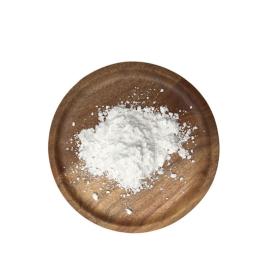-
Categories
-
Pharmaceutical Intermediates
-
Active Pharmaceutical Ingredients
-
Food Additives
- Industrial Coatings
- Agrochemicals
- Dyes and Pigments
- Surfactant
- Flavors and Fragrances
- Chemical Reagents
- Catalyst and Auxiliary
- Natural Products
- Inorganic Chemistry
-
Organic Chemistry
-
Biochemical Engineering
- Analytical Chemistry
- Cosmetic Ingredient
-
Pharmaceutical Intermediates
Promotion
ECHEMI Mall
Wholesale
Weekly Price
Exhibition
News
-
Trade Service
Phase III clinical study AURA3 (NCT02151981) confirmed that second-line treatment with third-generation EGFR-TKI osimertinib can improve PFS in patients with NSCLC compared with chemotherapy, but there was no statistical difference in OS, possibly because patients who progressed on chemotherapy crossed over to osimertinib treatment-induced, also suggests that patients after chemotherapy may also benefit from osimertinib treatment
.
.
Phase III clinical study AURA3 (NCT02151981) confirmed that second-line treatment with third-generation EGFR-TKI osimertinib can improve PFS in patients with NSCLC compared with chemotherapy, but there was no statistical difference in OS, possibly because patients who progressed on chemotherapy crossed over to osimertinib treatment-induced, also suggests that patients after chemotherapy may also benefit from osimertinib treatment
However, real-world OS data for osimertinib are limited, and efficacy in patients who do not meet clinical study criteria is unclear
This retrospective study included patients with advanced NSCLC who received osimertinib after first-line therapy and were divided into two groups according to the inclusion criteria of the AURA3 trial
.
Progression-free survival (PFS) and OS were assessed using the Kaplan Meier method
This retrospective study included patients with advanced NSCLC who received osimertinib after first-line therapy and were divided into two groups according to the inclusion criteria of the AURA3 trial
A total of 328 patients were enrolled; 126 (38%) patients were eligible for inclusion in the AURA3 trial and 202 (62%) patients were not
The median follow-up time was 27.
8 months (0-56 months)
.
At the time of data cutoff, 93 patients were still receiving osimertinib
The median follow-up time was 27.
Differences in PFS
PFS DifferencePFS DifferenceEligible patients had longer OS compared with ineligible patients (24.
0 vs.
15.
4 months, p = 0.
001)
.
Median OS was 18.
Eligible patients had longer OS compared with ineligible patients (24.
OS differences
OS difference OS difference OS differenceECOG PS was the best predictor of OS
.
Compared with patients with ECOG PS of 0, the HRs (95%) of patients with ECOG PS=1, 2 and 3 were 1.
ECOG PS was the best predictor of OS
There were no significant differences in the incidence of dose-limiting toxicities between eligible and ineligible patients
.
Thirty-five (10.
7%) patients had osimertinib dose reductions due to adverse events
.
Gastrointestinal toxicity, mainly diarrhea, was the reason for the dose reduction
.
Treatment was discontinued in 19 (5.
8%) patients due to diarrhea, skin toxicity, decreased renal function, and pneumonia
.
.
Thirty-five (10.
7%) patients had osimertinib dose reductions due to adverse events
.
Gastrointestinal toxicity, mainly diarrhea, was the reason for the dose reduction
.
Treatment was discontinued in 19 (5.
8%) patients due to diarrhea, skin toxicity, decreased renal function, and pneumonia
.
There were no significant differences in the incidence of dose-limiting toxicities between eligible and ineligible patients
.
Thirty-five (10.
7%) patients had osimertinib dose reductions due to adverse events
.
Gastrointestinal toxicity, mainly diarrhea, was the reason for the dose reduction
.
Treatment was discontinued in 19 (5.
8%) patients due to diarrhea, skin toxicity, decreased renal function, and pneumonia
.
In conclusion, the study showed that most patients did not meet the AURA3 study criteria, the OS of ineligible patients was worse than that of eligible patients, and the OS of eligible patients was consistent with the AURA3 study
.
.
In summary, the study showed that most patients did not meet the study, the majority of patients did not meet the AURA3 study criteria, the OS of ineligible patients was worse than that of eligible patients, and the OS of eligible patients was comparable to that of eligible patients.
Consistent with the AURA3 study
.
According to the AURA3 study criteria, the OS of ineligible patients was worse than that of eligible patients, and the OS of eligible patients was consistent with the AURA3 study
.
Original source:
Original source:Lin L, Smit EF, de Langen AJ, van Balen DEM, Beijnen JH, Huitema ADR.
Representativeness of Phase III Trial for Osimertinib in Pretreated Advanced EGFR-Mutated Non-small-cell Lung Cancer Patients and Treatment Outcomes in Clinical Practice.
Target Oncol .
2022 Jan;17(1):53-59.
doi: 10.
1007/s11523-021-00862-x.
Epub 2021 Dec 11.
PMID: 34894319; PMCID: PMC8783869.
Representativeness of Phase III Trial for Osimertinib in Pretreated Advanced EGFR-Mutated Non-small-cell Lung Cancer Patients and Treatment Outcomes in Clinical Practice.
Target Oncol .
2022 Jan;17(1):53-59.
doi: 10.
1007/s11523-021-00862-x.
Epub 2021 Dec 11.
PMID: 34894319; PMCID: PMC8783869.
Comment here







